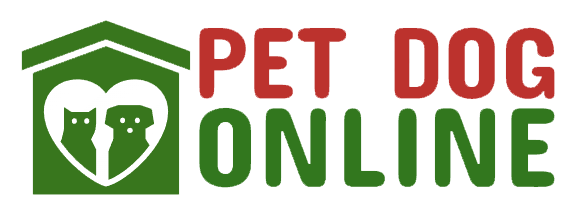
Aid Dog Bite At Home
Everyone adores dogs…..Until they dig their teeth into flesh! Dogs are exceptionally popular pets and for good reasons. They are loyal, friendly, dependable, social and smart animals. They are very understanding and are safe in most situations. Still, what you should keep in mind is that they are animals and can, you know, slip. The chase and bite instinct is a part of them which, on one hand, makes them great guards and saviors, but on the other hand makes them dangerous and harmful in certain situations.
So, for dog owners (and even for others), having a decent understanding and judgment in relation to dog bites can be quite substantial. This article would give you a better insight into dog bites, treating dog bites at home and how to prevent dog bites.
Some quick dog bite facts :
Dog bites occur more often than what you would ever imagine. In the United States alone, about 4 million dog bite cases are reported each year, out of which about 21 percent are infected. Globally, this number can reach the scales of tens of millions of people per annum. Dog bites can infect people with Rabies, which kills about sixty thousand people per year. Other deadly infections include MRSA, Capnocytophega canimorsus and Tetanus.
Therefore, it becomes extremely important to be aware of this issue. The gravity of the problem hikes since dogs are very popular pets, and most owners are just about the good things that come with a dog and are not up to handle the responsibility that comes with it.
Breeds that bite :
Statistically speaking, big dog breeds like Pitbull, German shepherd and Rottweiler’s are most commonly spotted in dog bite cases. These breeds are notorious for pretty terrible bites.
Well, you can expect any dog breed to have the potential to attack when threatened or provoked. Seriously, even there are cases when even some toy breeds go bonkers and plant bites. The only difference is some are deadlier than others, owing to their sheer size and natural temperament. You can check out our list of top dangerous dog breeds to know more about them.

Dog behaviour – Signs a dog shows before biting :
Dogs would show some warning signs before attacking. Knowing those signs can save you-you never know! These are some of the common signs an average dog would show before biting:
- Its tail will be up.
- It will puff up its chest.
- It will bare its front teeth, looking aggressive.
- The ears perk up.
- Its eyes will be fixed on you.
- If you notice any or all of the above signs, take it as a warning. There is a high chance of the dog pouncing on you, so better be taking the right steps instead of the risk. What you do next can be quite crucial for what the dog chooses to do. And being more aware and informed can save a great deal of pain and trouble.
Prevention of human beings (Safety tips to prevent dog bites) :
With anything harmful and/or dangerous, “precaution is better than cure.” It stands true here too. You can possibly avoid a dog bite occurrence if you follow certain guidelines recommended below.
- Do not approach an unfamiliar dog. Any dog, or creature for that matter, will feel unsafe when approached by strangers. They are bound to be cautious and volatile when approached by a stranger.
- Do not run away from it. It triggers the chase and predatory instincts in dogs and in an attempt to grab hold of you, a bite can happen.
- Dogs get familiarized with you by smelling you. Do not panic and make quick jerky movements around it. That invites a bite.
- If you find yourself surrounded by angry dogs, lie on the floor, curl up into a ball and cover your head and ears. This will save your head from bites as well as ears and nose from ripping off.
- Do not panic or make loud noises. If you somehow panic them, they might get more aggressive. This is true for anything living. Human beings can very much relate to this-the reflex action. These come into play when the body is in a potentially threatening situation. To save time, the information is given a response right after it reaches the spinal cord, so the brain is not involved in handling and processing the stimuli (info or input). This is very impulsive and sends the person or animal, your dog in this case, into a very aggressive defensive position. It can result in an unplanned, involuntary attack.
- If you notice a street dog that is behaving strangely around your neighborhood, make sure to report it to the concerned authorities.
- Dogs are extra-protective for their puppies. Make sure you do not extend any threatening behavior. Try to avoid going near them unless necessary.
- Do not encourage aggressive behavior in your dog. It makes them believe it is okay to be aggressive and it will be a normal thing to do. Train them to be more tolerating, get a trainer if so required. Let them know what kind of behavior is okay and what is not.
- Never let small children around a dog without adult supervision- except in the case that the dog is well trained and socialized. Kids might do something unintentionally that might tip off the dog to bite.
- Avoid close face interaction with the dog. A dog’s mouth is full of bacteria, and they are also immune to it. But as a human being, having taken a safer evolutionary path, your immune system may not necessarily be able to save you from everything that dog is carrying. Moreover, even while playing with your dog, getting close to its mouth makes you susceptible to eventual scratches and nips by one of its sharp canines and fangs. Not too hard to contact an infection.
- Never attempt to break up a dog fight unless you’re certain you will be safe and you can do it without putting yourself at harm’s way. And only do it if it is your dog in the fight. Stay clear otherwise.
- Do not disturb the dog when it is feeding. Animal instinct is to be competitive for food and shelter, even though there is no real threat to their food. Their brains are wired to protect their food and will get defensive when approached or disturbed while feeding. This cannot be held against them. They owe it to millions of years of the evolutionary process.
 Preventions to be taken by a pet owner for pet :
Preventions to be taken by a pet owner for pet :
Most important prevention actions are on the part of the owner. Here are few must do’s for dog
- Sign-boards, warning about a dangerous dog on the premises, so as to warn strangers.
- Make sure the pets are taken due care of. A happy, healthy dog is less likely to attack people.
- Train your dog to be around people and not be uncomfortable or feel threatened by human beings.
How to treat a Dog bite :
Dog bites are of majorly two types- Major and Minor.
Minor dog bites are mere scratches, a little bleeding, no loss of flesh and mildly painful. Still, it can cause infections, so all dog bites must be considered infectious as a thumb rule.
Any minor bite can be treated at home but vaccination is important to prevent any possible infection.
Thoroughly clean the wound immediately with warm water.
Try to get as much blood out of the wound as painlessly as possible. This will reduce any chances of infected blood spreading to the body.
Consult a doctor immediately, especially if the dog was unknown.
The major dog bite can be extremely painful, can cause major blood loss and flesh torn off the body.
Major dog bites may require stitches or even reconstructive surgery. Vaccination is crucial to prevent infections. Visit a hospital immediately. The earlier the better.
Symptoms of an infection- No delays in consulting a doctor
If there is any delay in treatment or vaccination after the dog bite, and the following symptoms show up, it is an emergency and any further delay should be avoided.
The wound is starting to hurt more. It is getting more sore and sensitive.
There is a distinct redness around the wound.
The region around the wound is starting to swell and is extremely sensitive to touch.
Secretion of pus, the weird foul smell is definitive of an infection.
Shivering, a high fever.
Swollen lymph nodes are also indicative of infection.
Our body’s immune system tries to fight the infection, which raises body temperature. The lymph nodes fire up because they are creating more White Blood Cells to fight the infection.
Notice some of these symptoms :
Be certain that an infection has set in. This cannot be treated at home now. Seek professional medical help immediately.Dogs rarely bite children. But when they do, the results can be tragic – for both the child and the dog. What’s even more upsetting is that most dog bites could be prevented if parents understood canine body language.
Domesticated dogs have a rich and complex language for communicating their feelings. They might use the occasional bark or growl but rely mainly on body posture to show they are scared, happy or defensive.
Unfortunately, children usually don’t understand what a dog is trying to tell them. It’s common for kids to treat dogs as “toys” and engage in rough or over-excited play. Many children will also disturb sleeping dogs or approach their pet in confined spaces (such as in a crate).
Most dogs are tolerant of this behaviour. If you know what to look for, however, there will nearly always be signs the dog is unhappy and trying to tell the child to give it space. These signals could include a hunched posture, flattened ears or holding the tail down.
If a dog is showing these signs of anxiety, separating it from the child could prevent a nasty accident.
For this reason, The Dog Clinic has put together a dog body language guide for parents. It contains everything parents need to know about warning signs and teaching their children to interact safely with dogs.
Author:
Ganga K Kurup
An experienced and professional writer, working to search, create and present most appropriate content and information to those in need. Quite in love with animals and every creation of nature and exceptionally happy to share whatever knowledge I have gained from my love and curiosity for the same. I believe in working towards making the world a better place to live- not just for the human, but also for all the other beings with whom we share this planet.





